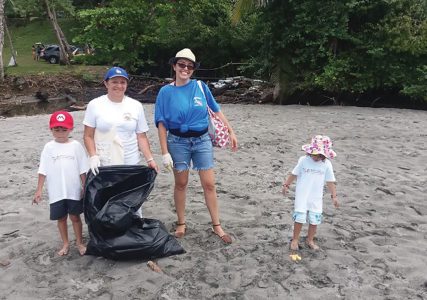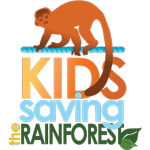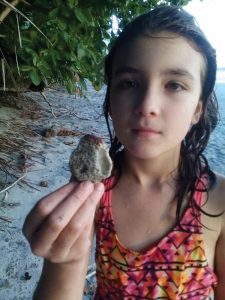Karma Saving the Rainforest
Hello again! This is Karma from Kids Saving The Rainforest. This month I am going to talk a little bit about our beautiful oceans! Here at KSTR, we mostly spend our time rescuing local wildlife and planting trees, but we care about the ocean too! Recently, some of our volunteers pitched in helping a beach cleanup with another great local group, Operation Rich Coast. They organize lots of beach cleanups in lots of different areas, so if you would like to help them out on their next beach clean-up follow them on Facebook at facebook.com/operationrichcoast.
I am a very lucky person because I get to go to the Manuel Antonio beach almost every day! One day I was walking, and I found a piece of coral on the ground. It was white, and it still had a little bit of purple on it. I learned at my school, Life Project Education, that white coral is dead coral. I wondered, was this piece of coral being killed by something that humans had done?
Coral reefs are very important. They provide shelter, and food for thousands of animals, and they also protect the coastline from wave action, and storms. All the time, people are discovering coral reef plants and animals can provide important medicines for things like arthritis, cancer, Alzheimer’s, and other diseases. More than one fifth of the world’s coral reefs have already been destroyed. At this rate, who knows what we are losing!
Climate change is another threat to coral reefs. Coral cannot live if the water temperature gets too high. A major issue is coral being killed by pollution. Many things are dumped into the ocean, such as oil, sewage, and run-off from farms. This pollution puts too much nitrogen in the water, which makes algae grow out of control, blocking sunlight from getting to the coral.
How can you help coral reefs, you might wonder. Let me tell you! There are lots of ways you can help! If you are here on vacation, don’t buy coral as a souvenir to take home. Someone probably killed that coral and took it from the ocean to sell to you! If you scuba dive or snorkel, don’t touch the coral. It’s alive! It can easily break, or even get smothered by you stirring up sediment. Don’t leave your trash behind while you are at the beach. While you’re there, bring a couple of trash bags and do a beach clean-up! The trash you pick up will stay out of the ocean!
 There are more ways you can help protect coral reefs. Conserve water! The less water you use, the less wastewater runs off into the ocean! Walk or ride a bike, cutting down on burning fossil fuels.
There are more ways you can help protect coral reefs. Conserve water! The less water you use, the less wastewater runs off into the ocean! Walk or ride a bike, cutting down on burning fossil fuels.
You can even plant a tree! Trees also reduce runoff, and they help fight climate change, which helps prevent coral bleaching. Kids Saving the Rainforest has a reforestation project in nearby Parrita. We have a goal of planting 94,000 trees. For more info on our tree planting, check out http://reforestationkstr.org. You can donate to plant a tree with us, helping us save the rainforest and coral reefs at the same time!
Well, that’s all for this month readers. Thanks for your help protecting our planet! Don’t forget, if you find orphaned or injured wildlife that needs help, contact Kids Saving the Rainforest and we will come to the rescue! We have a brand new phone number just for animal emergencies!
Contact us via WhatsApp at
(506) 88-ANIMAL (8826-4625).


